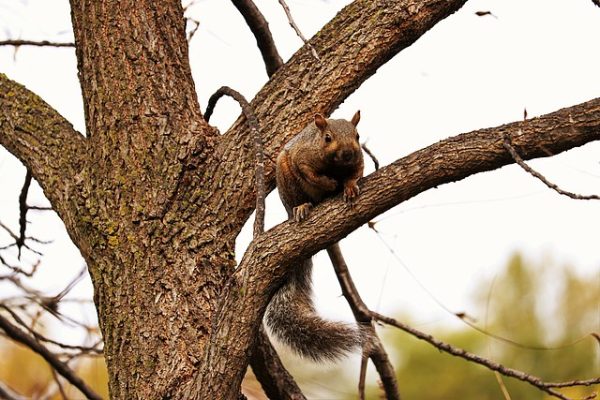The morning after the Midwinter Ball, campus was blanketed with silence. As I sluggishly trudged to the Libe to chip away at my mountain of homework, something stopped me in my tracks. A parade of five squirrels darted across the sidewalk, chattering up a storm as they ran, spiraling up a tree in front of Hasenstab. This behavior wasn’t surprising — many young squirrels engage in social play to refine their motor skills for adulthood. Social play and simulated chases in eastern gray squirrels (Sciurus carolinensis) also help prepare them for responding optimally to real threats. They scaled the trunk, making alarmingly loud vocalizations. Astoundingly, when they reached the top of the tree, one squirrel squealed and PLUMMETED 40 feet, straight to the ground. I heard a painfully loud THUMP and my jaw dropped. I braced myself for the worst. A second later, the squirrel popped right back up like a spring and went back up the tree, unfazed. Shockingly, the same exact thing happened again five minutes later. This time, with a different squirrel. How is it possible that these critters escape death every time? The answer: PHYSICS!
When anything is falling, it has gravity and air resistance (or “drag”) acting on it. The velocity of any object increases over the course of the fall, as does its drag. Although a fall from 40 feet would probably kill a human, squirrels can walk away unscathed. They are small and weigh very little, meaning the pull from gravity on squirrels is much lower than with humans. Their spread out bodies and fluffy tails generate a LOT of drag, http://tinyurl.com/2v43ebxxmaking their velocity pretty low and survivable. Even though squirrels’ tails account for only three percent of their body mass, they are crucial for stabilizing the body for a safe landing. Scientists claim squirrels can withstand falls of up to 200 feet , although I can’t endorse flinging squirrels off of high places (as tempting as it sounds for science).
Signing off,
Maxima Gomez-Palmer ’26, for the Cole Student Naturalists










